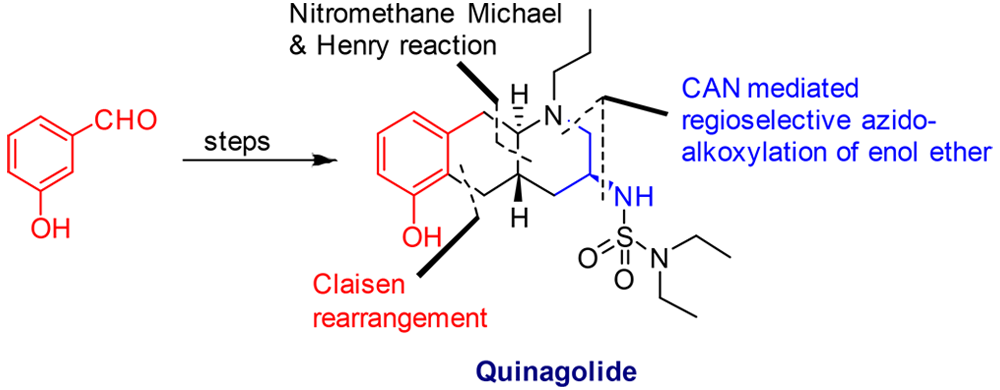Ceric ammonium nitrate
CAS number: 10139-51-2
Ceric Ammonium Nitrate is used as an efficient catalyst for ring opening of epoxides in the presence of water, thiols and acetic acid.
Related images

The total synthesis of ()-quinagolide was accomplished via a ceric ammonium nitrate (CAN)-mediated regioselective azidoalkoxylation route of enol ethers.
Related Questions and Answers
A: Ceric ammonium nitrate (CAN) acts as an efficient reagent to promote the carbon-Ferrier rearrangement of glycals with carbon nucleophiles such as allyltrimethylsilane. It facilitates the formation of C-allyl glycosides in moderate to good yields with high selectivity.
A: The yields of quinones 4a and 4b were 69% and 78%, respectively, using the traditional addition method. In contrast, the yields of diquinones 5a and 5b were significantly higher at 84% and 88%, respectively, using the inverse addition method. This indicates that the inverse addition method is more efficient for diquinone formation, while the traditional method is more suitable for quinone formation.
A: A study found that the traditional addition of CAN to the arene solution in acetonitrile favors quinone formation, yielding compounds 4a and 4b with higher percentages (69% and 78%, respectively). In contrast, the inverse addition of CAN (adding the arene solution to an aqueous CAN solution) favors diquinone formation, yielding compounds 5a and 5b with very high yields (84% and 88%, respectively). This difference is attributed to the solubility of the arene substrates in water, which affects the aggregation and subsequent oxidation pathway.
A: CAN is an inorganic compound with the formula (NH4)2Ce(NO3)6 , characterized by its orange/red color and solubility in water. It functions as a powerful oxidizing agent (E∼1.61 V) in organic synthesis , particularly for aromatics and dyes. Its primary advantage over other cerium (IV) reagents is its higher solubility in water (1,410 g/L at 25 ℃). In redox reactions, Ce(IV) converts to Ce(III) via a one-electron change, causing the solution color to shift from orange to a weak yellow. This compound has been specifically examined for the fast degradation of Reactive Red 31 (RR31) dye in wastewater treatment.